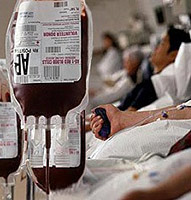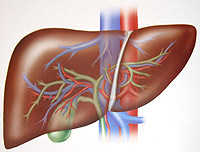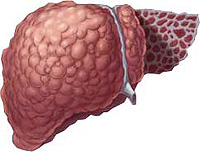What is hepatitis D? How to diagnose hepatitis D? How treatment is hepatitis D? Answers to these questions you will find in the article.
Content
What is hepatitis D
Hepatitis D is a liver disease caused by a virus
Hepatitis D. The causative agent of this form of the disease has a defect that
does not allow him to multiply in the human body - for
It needs to participate an assistant virus. Such an assistant for
It serves the hepatitis virus in. The resulting tandem -
Hepatitis D in combination with hepatitis B - causes quite severe
disease.
Infection most often happens when transfusions
blood, through the syringes of drug addicts. Possible sex transfer path,
And also getting a virus from mother to the fetus. All persons infected
Hepatitis B virus, susceptible to hepatitis D.
Situations at which infection occurs most often:
 Transfusion
Transfusion
Donor blood. Worldwide on average 0,01-2% of donors are
carriers of hepatitis viruses, so currently donor blood
Before transfusion, the recipient is examined for hepatitis viruses.
The risk of infection rises in people who need repeat
blood transfusions or preparations.
- Using one needle with different people many times increases the risk of infection with hepatitis B and D.
- Viruses B, C, D, G can be transmitted during sexual contact. Most often hepatitis is transferred to.
- Way
infection from mother to child (doctors call it «vertical»)
observed not so often. Risk rises if a woman has an active
The form of the virus or in recent months of pregnancy suffered sharp
hepatitis. The probability of fetal infection sharply increases if Mother,
In addition to the hepatitis virus, has HIV infection. With milk mother virus
Hepatitis is not transmitted.
- Hepatitis B and D viruses are transmitted when applying a tattoo, acupuncture, piercing by the ears by non-sterile needles.
In 40% of cases, the source of infection remains unknown.
Often
infection with hepatitis B and D viruses occurs simultaneously. From moment
infection to the development of the disease passes, as in hepatitis in 1.5-6
months. Clinical picture and laboratory data are the same as Hepatitis B. However, with a mixed infection, severe forms of the disease prevail, often leading to cirrhosis. Doctors converge on the fact that the forecast for this disease is often unfavorable.
Hepatitis D, diagnosis and treatment
Diagnostic
and the treatment of sharp hepatitis B and D will be renovated by a infectious,
Chronic hepatitis - hepatologist or gastroenterologist.
The main thing
The criterion for diagnosis is laboratory indicators:
Specific markers of hepatitis viruses, changes in biochemical
blood indicators.
Treatment of acute hepatitis D should
held in hospital. It requires an integrated approach and depends
from the stage and severity of the disease. When hepatitis D applies the same
Preparations as hepatitis B, in particular, alpha interferon.
Spicy
Hepatitis D can end both recovery and transition
in chronic shape. Subject to the implementation of medical recommendations,
relating to labor and recreation, nutrition, psycho-emotional
loads, as well as reception of drugs can be achieved more
easy course of the disease and delay the development of liver cirrhosis.









